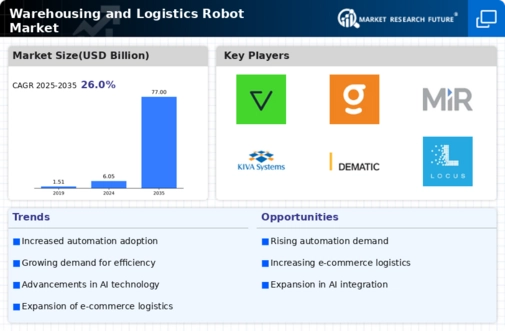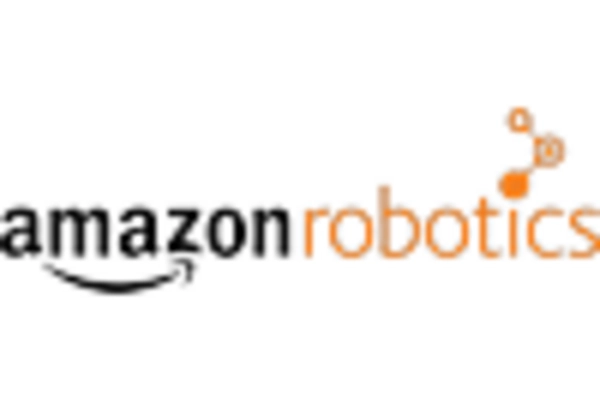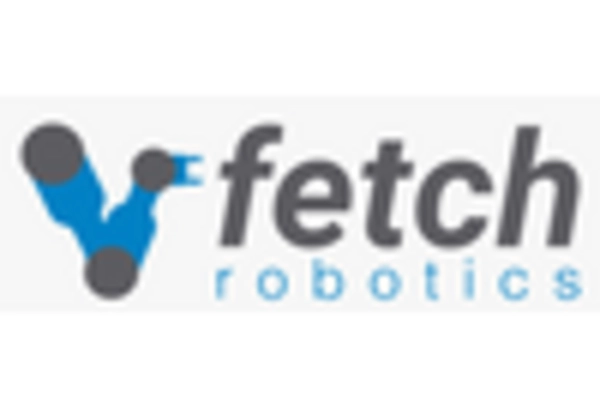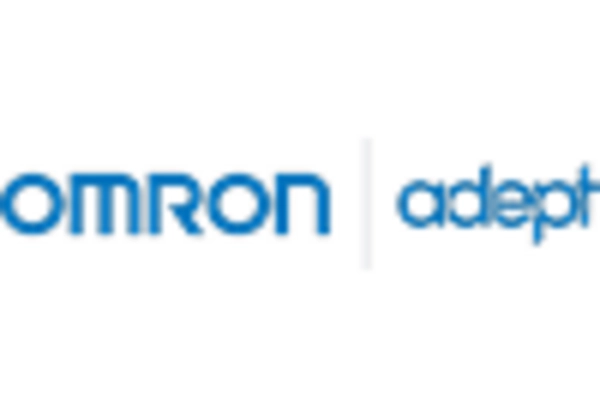Rising Demand for Efficiency
The Warehousing and Logistics Robot Market is experiencing a notable surge in demand for efficiency. Companies are increasingly seeking to optimize their operations, reduce labor costs, and enhance productivity. According to recent data, automation in warehousing can lead to a 20-30% increase in operational efficiency. This trend is driven by the need for faster order fulfillment and improved inventory management. As businesses strive to meet consumer expectations for rapid delivery, the integration of robotics into logistics operations becomes essential. The Warehousing and Logistics Robot Market is thus positioned to benefit from this growing emphasis on efficiency, as organizations invest in advanced robotic solutions to streamline their processes.
Focus on Supply Chain Resilience
The focus on supply chain resilience is becoming increasingly critical within the Warehousing and Logistics Robot Market. Recent disruptions have highlighted the vulnerabilities in traditional supply chains, prompting companies to seek more robust solutions. Robotics can enhance supply chain flexibility and responsiveness, allowing businesses to adapt to changing market conditions. By integrating automated systems, companies can improve their inventory management and reduce lead times, thereby enhancing overall resilience. This strategic shift towards automation in logistics is likely to drive growth in the Warehousing and Logistics Robot Market, as organizations prioritize investments in technologies that bolster their supply chain capabilities.
Technological Advancements in Robotics
Technological advancements are significantly shaping the Warehousing and Logistics Robot Market. Innovations in artificial intelligence, machine learning, and sensor technology are enhancing the capabilities of robotic systems. These advancements enable robots to perform complex tasks such as real-time inventory tracking and autonomous navigation. The market is projected to grow as these technologies become more accessible and affordable. For instance, the introduction of collaborative robots, or cobots, allows for safer interaction between humans and machines, further driving adoption. As companies recognize the potential of these technologies to transform their logistics operations, the Warehousing and Logistics Robot Market is likely to see accelerated growth.
Labor Shortages and Workforce Challenges
Labor shortages are increasingly impacting the Warehousing and Logistics Robot Market. Many sectors are facing difficulties in hiring and retaining skilled workers, which has led to a greater reliance on automation. The integration of robots into logistics operations offers a viable solution to mitigate these workforce challenges. By automating repetitive and labor-intensive tasks, companies can maintain productivity levels despite workforce constraints. This trend is particularly evident in regions where unemployment rates are low, making it challenging to find suitable labor. As businesses adapt to these labor market dynamics, the Warehousing and Logistics Robot Market is expected to grow as a result of increased automation.
E-commerce Growth and Consumer Expectations
The rapid growth of e-commerce is a pivotal driver for the Warehousing and Logistics Robot Market. As online shopping continues to expand, businesses are compelled to enhance their logistics capabilities to meet rising consumer expectations for speed and accuracy. Data indicates that e-commerce sales have increased significantly, necessitating more efficient warehousing solutions. Robotics plays a crucial role in automating order picking, packing, and shipping processes, thereby reducing lead times. This shift towards automation in response to e-commerce demands is likely to propel the Warehousing and Logistics Robot Market forward, as companies invest in robotic technologies to remain competitive.

















Leave a Comment